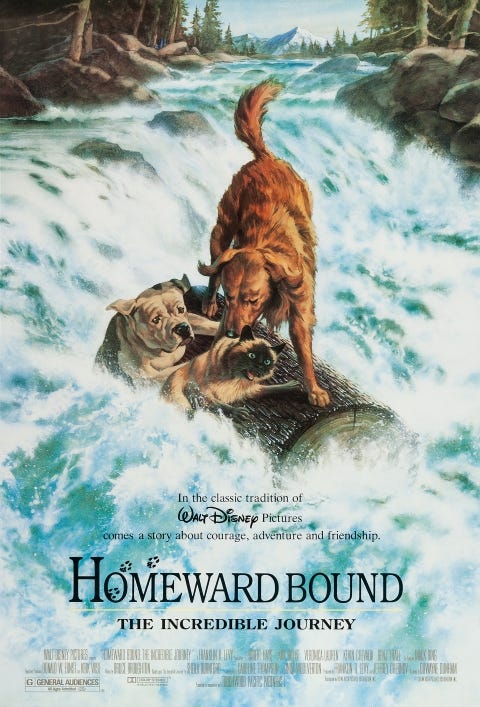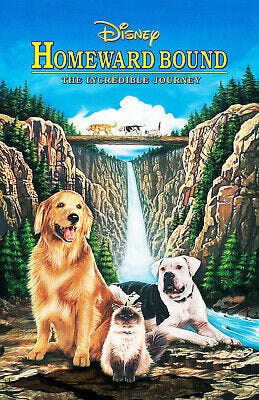Lord willin’ and the creek don’t rise, sooner or later this column is going to start feeling more like Déjà Vu Plus-Or-Minus. Over the past decade, the House of Mouse has transformed into the Remake Factory, plundering its catalog of classics, particularly animated films it can turn into “live-action” movies (often with a heavy emphasis on those air quotes surrounding live-action). It’s easy to accuse the studio of laziness or creative bankruptcy but hey, they’re not the ones buying tickets to these things. They’ll only stop making them if you all agree to stop seeing them.
But in 1993, the idea of a Disney remake was still somewhat novel. The TV division had made a few tentative tests of the waters on The Magical World Of Disney. In 1988, they aired a new version of The Absent-Minded Professor starring Night Court’s Harry Anderson. A year later, they got more ambitious with Polly, a musical adaptation of Pollyanna directed by Debbie Allen and featuring an entirely African-American cast. These did fairly well, especially Polly which even earned a sequel, Polly: Comin’ Home! Even so, Disney didn’t seem to be in a rush to release a theatrical remake.
In many ways, 1963’s The Incredible Journey was the ideal test balloon. The original movie was fondly remembered and certainly well-liked. But interest in it had been slowly tapering off over the years. It didn’t show up on TV nearly as often as it once had, so it had probably been close to a generation since it had won any new fans. And movies like Cheetah and White Fang had proved that no matter how hip or cool Disney tried to appear, they could always find room on the schedule for animal pictures.
Based on the talent behind the scenes, the studio was taking the project seriously. The screenplay was written by Caroline Thompson. Thompson had collaborated with once-and-future Disney employee Tim Burton on the script for Edward Scissorhands and cowritten the screenplay for The Addams Family. It was her love of the original Incredible Journey that persuaded Disney to remake it. Her script was then rewritten by Linda Woolverton, who had crafted the final animation screenplay for Beauty And The Beast.
In a later interview with Lauren O’Connor for the Writers Guild Foundation, Thompson said she didn’t even know the movie had been made until her then-partner, Danny Elfman, was approached about doing the score. However, she was brought back in post-production to write some additional voice-over dialogue for the animals. Elfman, by the way, did not end up composing the music. That gig went to Bruce Broughton, who had previously written the scores for The Rescuers Down Under and Honey, I Blew Up The Kid.
To direct, the studio hired Duwayne Dunham. Dunham was a film editor who began his career assisting on Star Wars, Apocalypse Now, The Black Stallion (there’s that movie again), The Empire Strikes Back, Raiders Of The Lost Ark and the half-Disney co-production Dragonslayer. He moved up to the lead with Return Of The Jedi, then began collaborating with David Lynch on Blue Velvet. He made his directorial debut on Twin Peaks, which he also edited. In fact, Dunham directed the first episode of the series not directed by Lynch himself. Star Wars and Twin Peaks may not seem like logical stepping stones to a remake of The Incredible Journey but Dunham’s experience as an editor served him well here.
In its broad strokes, Homeward Bound hews closely to the story told by the original film. Three household pets, two dogs and one cat, are sent to stay temporarily with a family friend. When the caretaker (played in this version by Jean Smart) has to leave for a few days, the animals become convinced they’ve been abandoned and set off cross-country back home. Many of the major story beats are repeated, as well. The cat nearly drowns and becomes separated from the dogs, only to be found and nursed back to health. The younger, more inexperienced pup ends up with a face-full of porcupine quills. Anyone who had seen The Incredible Journey would find themselves on a familiar trail with Homeward Bound.
However, unlike some of Disney’s more recent remake attempts, Homeward Bound is not a mere carbon copy of an earlier film. This version makes some significant creative decisions that truly makes this a different version of the story. First off, the animals’ breeds have been switched and they’ve been renamed to something a bit less old-fashioned. Bodger, the old Bull Terrier, has become Shadow, a Golden Retriever. Luath, the young and impulsive Yellow Lab, is now Chance, an American Bulldog. And Tao, the Siamese cat, is now a Himalayan named Sassy.
But the most obvious change is allowing the animals to communicate with each other in human voice-overs. Michael J. Fox, who had come a long way since making his Disney debut in Midnight Madness, provides the voice of Chance. Sassy is voiced by Sally Field, who had come even farther since popping up as a beatnik in the lineup of weirdos in Moon Pilot. And Don Ameche, himself a Disney veteran thanks to The Boatniks, was featured as Shadow.
The voice work could have easily fallen into Look Who’s Talking territory and Chance occasionally leans a little too heavily on then-current pop culture references. But for the most part, it works, giving us a bit more insight into the animals’ personalities than the omniscient narrator of the original film. Fox, Field and Ameche all bring a lot of heart and warmth to the table, with Ameche in particular tugging at the heartstrings with his pure and simple love for his boy.
Homeward Bound solves another of the original film’s problems by placing more emphasis on the human family the pets want so desperately to get home to. The original movie barely gives them a second thought, shuttling them off to England before the story even starts and not introducing them in person until the movie’s nearly over. Here, they’re front and center from the very beginning with Chance causing chaos at the wedding of Bob Seaver (Robert Hays, giving Disney another shot after the debacle of Trenchcoat) and Laura Burnford (Kim Greist from such very un-Disney films as Brazil and Manhunter). And sending them off to San Francisco instead of across the pond allows the family to be more hands-on with the search for the missing animals.
There are little additions here and there that help add drama and tension between both the humans and the animals. For instance, the fact that Bob is now a stepfather and it’s his temporary new assignment in San Francisco that’s causing the family to leave behind their beloved pets puts a new spin on their dynamic. Also, having Chance be a recent addition to the family, a rescue dog for the youngest son, Peter (Benj Thrall), helps explain his fear of abandonment and terror at being recaptured. It also puts him in direct conflict with Shadow, whose devotion to his boy, Jamie (Kevin Chevalia), makes him incapable of imagining being abandoned.
The nature photography, shot on location in Oregon, and animal action is up to Disney’s usual standard and it’s here where Dunham’s expertise as an editor really comes through. For the safety and well-being of the many dogs, cats, bears, mountain lions and other assorted creatures, many of the animals were shot separately. Dunham knew exactly what coverage to get in order to create the illusion of interactivity. He also seems to know just how long to hold on a shot for maximum emotional impact. It’s hard not to get a little misty-eyed when Sassy reunites with Chance and Shadow, even harder at the end when Jamie waits to see if Shadow will come over that hill.
It appears that Disney was aware that Homeward Bound: The Incredible Journey was a winner. They gave it a soft opening on just two screens on February 3, 1993, hoping for positive reviews and for word of mouth to spread. That strategy paid off. Many critics were pleasantly surprised by how much they enjoyed the film. Even Siskel and Ebert, who’d practically come to blows over the relative merits of Benji The Hunted, gave it two thumbs up. The film expanded its release the following weekend and earned over $8 million, landing in third place behind Groundhog Day and Sommersby. It ended up with a little more than $41 million, outperforming other recent animal adventures. That was about the same amount made by Disney’s 1993 re-release of Snow White And The Seven Dwarfs, which says a lot about both the popularity of the studio’s practice of theatrical reissues and Homeward Bound.
The film did well enough to warrant a sequel a few years later, which we, of course, will get to in due course. Duwayne Dunham, however, would not return for the follow-up. While we won’t likely see him back in this column, he went on to become a fixture over at the Disney Channel, directing such TV-movies as Halloweentown, Right On Track starring a young Brie Larson and Tiger Cruise with Hayden Panettiere and Bill Pullman. Most of the cast of Homeward Bound would return with the exception of Don Ameche. This would be his last film released during his lifetime. Don Ameche passed away on December 6, 1993, at the age of 85.
The success of Homeward Bound: The Incredible Journey inspired Disney to look at remakes a bit more seriously. However, the floodgates wouldn’t open for a few more years. In the meantime, the remakes moved back to television. Over the next few years, The Shaggy Dog, The Computer Wore Tennis Shoes, Escape To Witch Mountain, Freaky Friday, The Barefoot Executive, Swiss Family Robinson and The Love Bug all got TV do-overs. And beginning in 1996, the studio would start to turn its attention to its animated classics. But we’ll get to that whole kettle of fish another time.
VERDICT: Disney Plus






